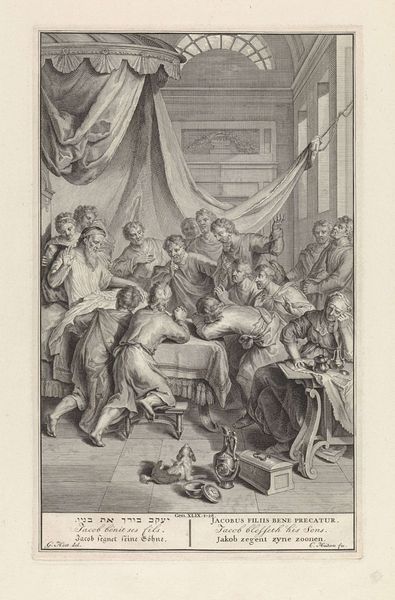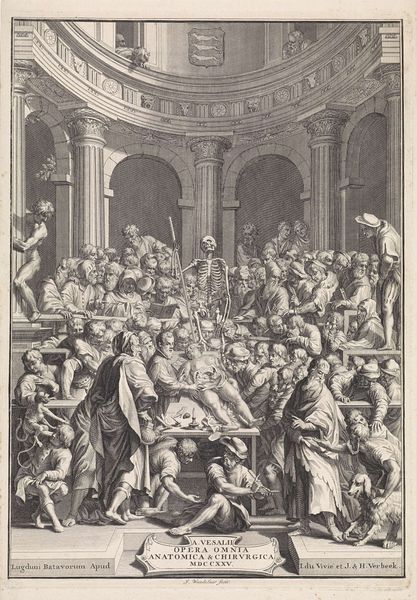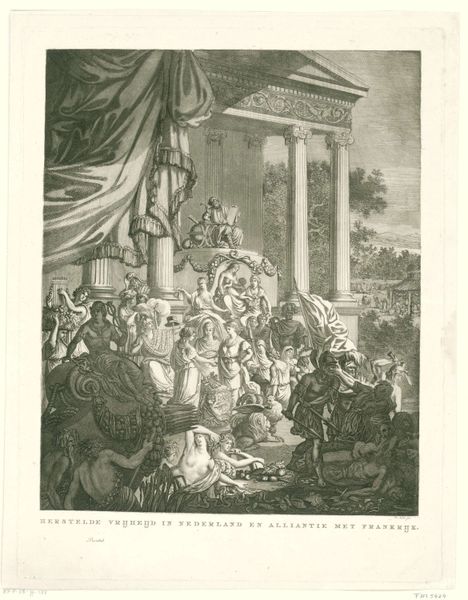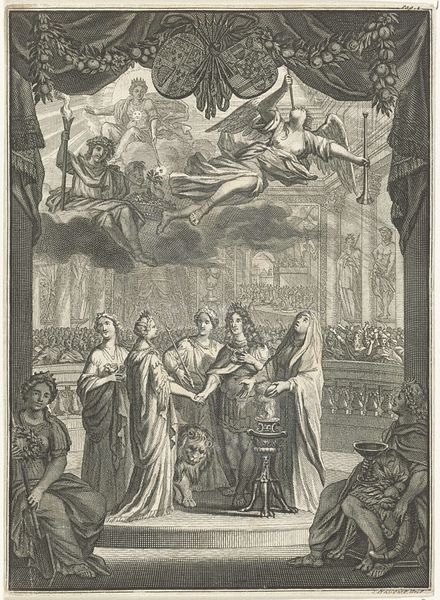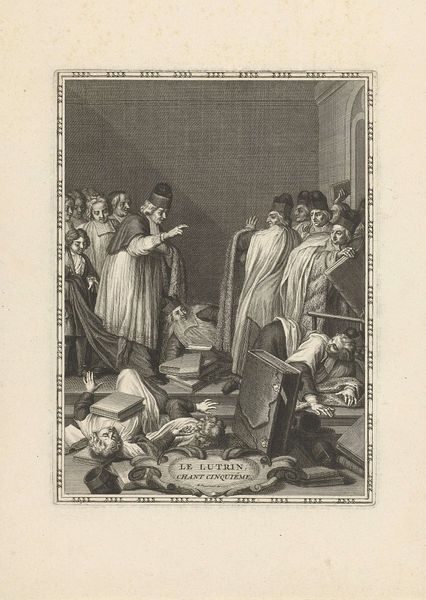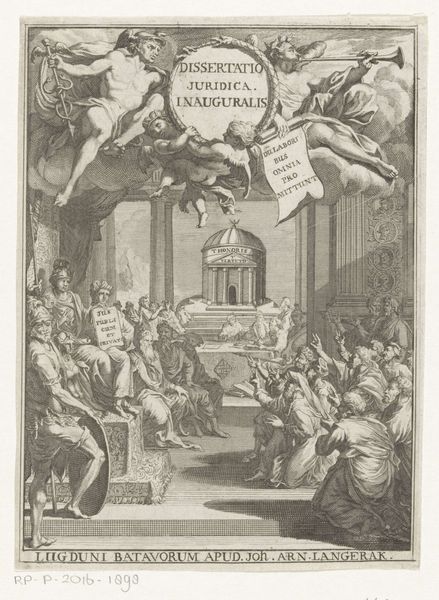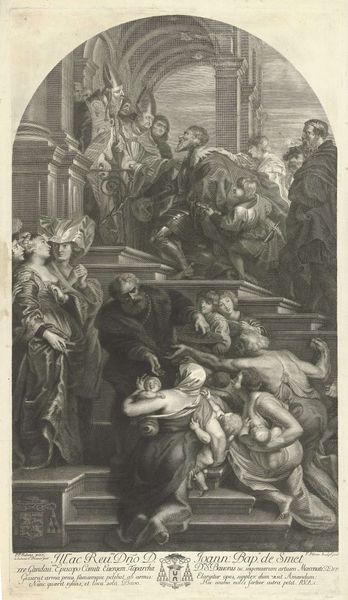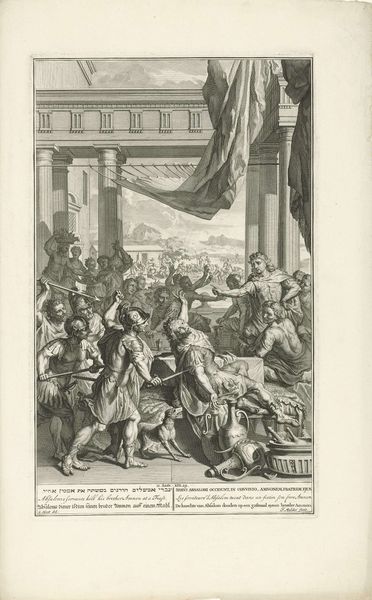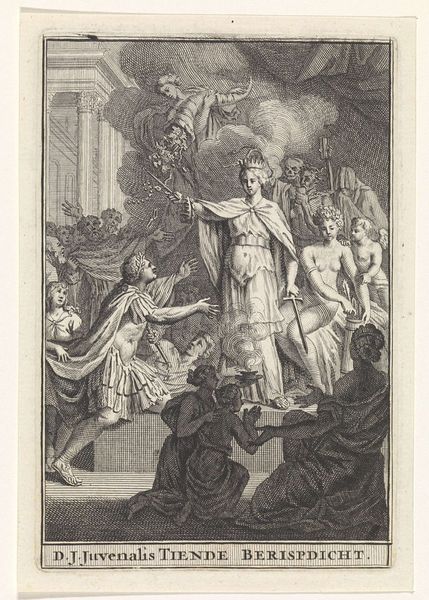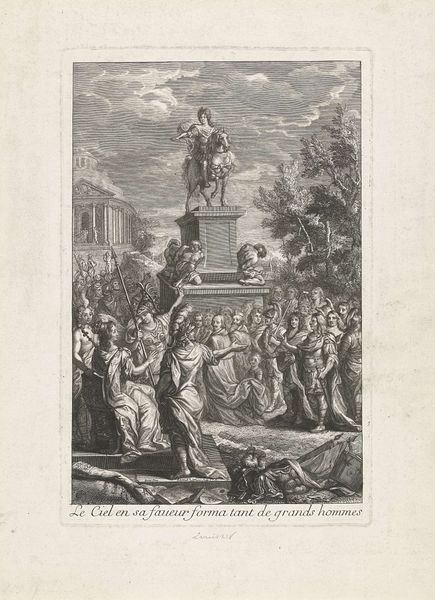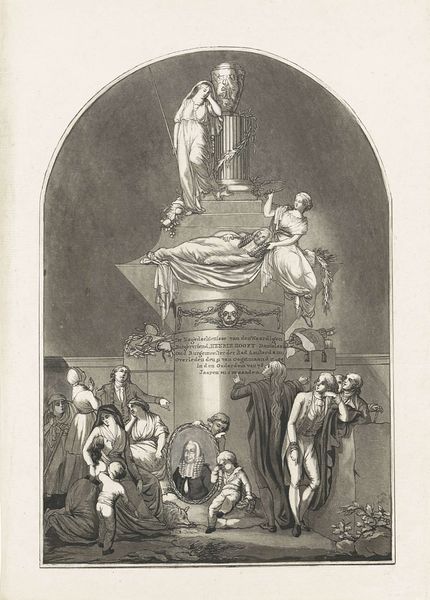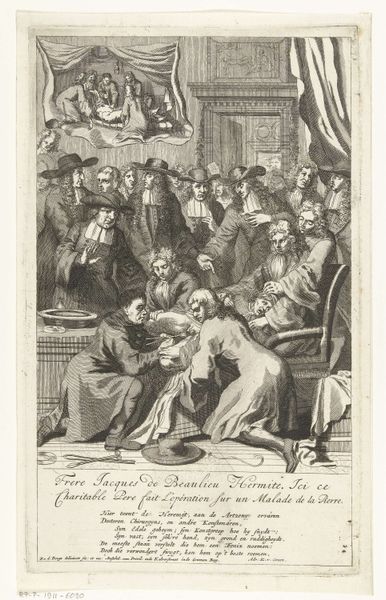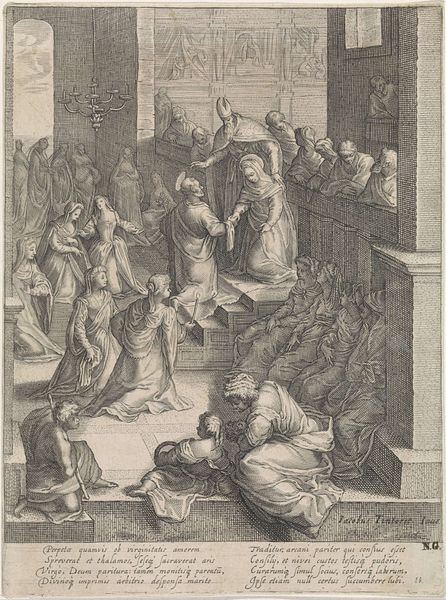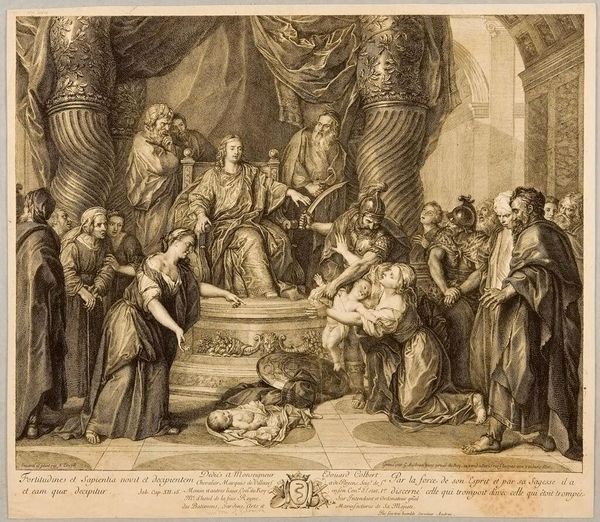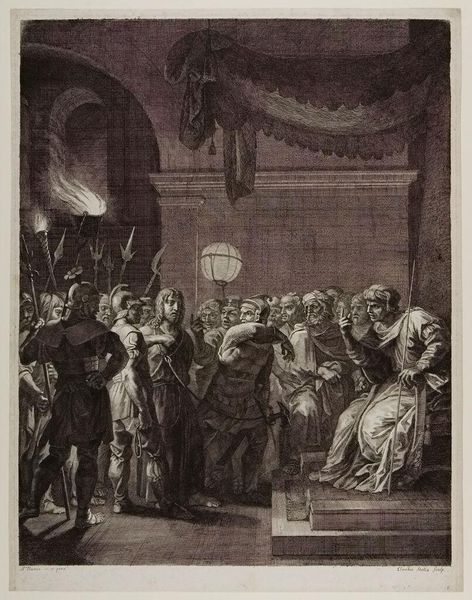
print, engraving
#
allegory
#
baroque
# print
#
old engraving style
#
figuration
#
line
#
history-painting
#
engraving
Dimensions: height 241 mm, width 174 mm
Copyright: Rijks Museum: Open Domain
Curator: This print, entitled "Feestmaal van Romulus," was crafted by Bernard Picart in 1727, currently held in the Rijksmuseum. The engraving depicts a gathering of what appears to be gods and mortals in a celestial setting. What is your immediate take? Editor: Well, my first impression is of structured chaos. Despite the heavenly setting and classical architecture, the composition feels incredibly busy, almost overwhelmingly so. The monochrome lends a sort of aged dignity though. Curator: I agree regarding its complexity, but that complexity, I posit, stems directly from a sophisticated deployment of baroque visual strategies. Notice how Picart organizes the figures on distinct layers in order to define different realms—we are moving upward, conceptually as much as visually, from earthly domain to divine realm. The stark lines further enhance separation. Editor: True, but consider that Bernard Picart operated within a nexus of shifting power structures and emerging social anxieties. A "Feast of Romulus" itself is loaded, and here Romulus becomes something more. He's a Roman founder deified amid constant power shifts that followed, used, as the legend so often was, to consolidate the state. The print itself could be read as legitimizing the elites. Curator: I see your point. Though, one could also argue for a less cynical interpretation of Picart’s deployment of allegory. Semiotically, Romulus functions as more than simply the city’s progenitor. Look at the gesture; Romulus is not so much elevated, as embraced, and it is a signal of a new kind of order, with universal underpinnings. Editor: Possibly, but to fully decouple such imagery from its real-world function in that historical moment is somewhat problematic. Images rarely exist within vacuums of pure formalism. They do socio-political work whether they wish to, or not, so to speak. Curator: An astute observation. It is in balancing the artwork’s formal mechanisms, on one hand, with its historical situatedness on the other, that a more encompassing, nuanced appreciation can transpire. Editor: Precisely! Understanding both the lines etched onto the plate, and the power dynamics shaping the hand that wielded the tool makes our comprehension that much richer.
Comments
No comments
Be the first to comment and join the conversation on the ultimate creative platform.
